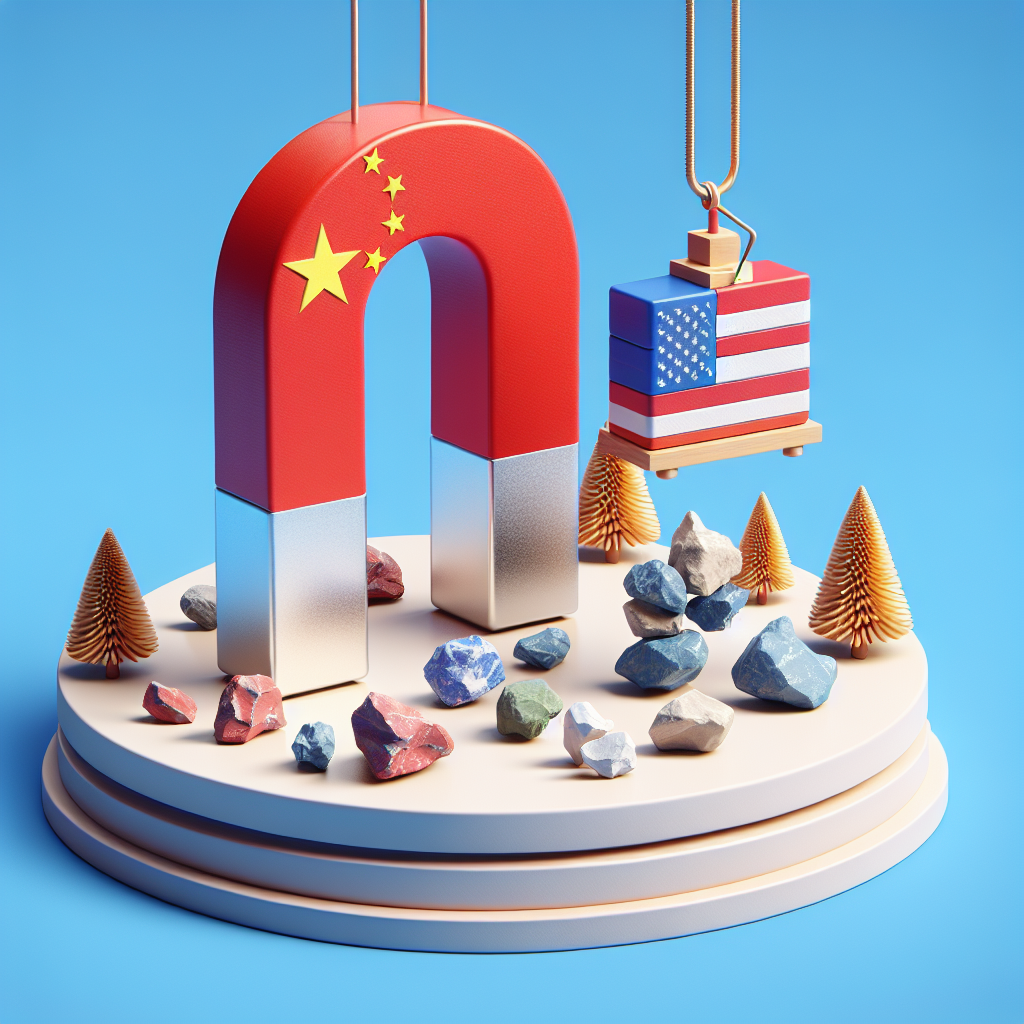China’s Dominance in Rare-Earth Refining: An Analysis of U.S. Challenges
The United States’ strategic interests in securing critical minerals have come to the forefront, particularly in the context of a global market increasingly dominated by China. A prime example lies in the field of rare-earth elements—vital components in manufacturing everything from smartphones to defense systems like jet fighters. President Trump has made arrangements to bolster U.S. mineral resources through potential deals in regions such as Ukraine, Greenland, and even Russia, yet the reality remains stark: the U.S. remains reliant on China for crucial refining capabilities.
Current State of Rare-Earth Processing
Despite possessing significant resources, including a substantial deposit in California’s Mountain Pass mine, the U.S. loses approximately two-thirds of its rare earths to China for processing. As highlighted by experts, the U.S. currently mines around 12% of the world’s rare-earth supply, placing it second to China, which holds an overwhelming 85% share of the refining market. The inability to process these minerals domestically hampers U.S. competitiveness and exacerbates reliance on a geopolitical rival.
The Implications of Refining Capacity Loss
One of the stark realities of America’s deindustrialization is its declining position in mineral refining. Historically, the U.S. was a major player in this sector until the 1990s, when China’s cheaper labor and less stringent environmental regulations enabled it to become the powerhouse it is today. Advanced manufacturing and refining operations gravitated towards China, leaving the U.S. struggling to compete against a backdrop of tightened regulatory environments and rising operational costs.
As the Trump administration attempted to address this gap in capability, it introduced measures aimed at revitalizing domestic mineral production and processing. Whether through executive orders aimed at streamlining permitting processes or direct financial support for new plants, the U.S. government sought to reclaim its position in the rare-earth landscape. A notable project involves Lynas Rare Earths, which, supported by Pentagon financing, aims to establish a processing facility in Texas.
Environmental Challenges and Market Dynamics
Despite these encouraging initiatives, new projects in the U.S. face numerous challenges. Environmental considerations often lead to lengthy permitting processes, which can delay or even derail the aspirations of revitalizing the domestic rare-earth sector. For instance, a nickel processing plant initially proposed in Minnesota was relocated to North Dakota, mostly due to environmental objections. Such challenges highlight the friction between the urgent need for domestic mineral supply chains and the long and complicated reality of meeting environmental standards.
Competing with China: The Path Forward
The larger question remains: can the U.S. successfully reclaim a substantial portion of the rare-earth refining market? Securing long-term, self-sustaining supply chains is vital, yet industry experts express skepticism regarding the feasibility of dismantling China’s stronghold. With the country establishing itself as the leading processor of cobalt—essential for batteries and defense technology—and investing heavily in nickel processing facilities abroad, U.S. efforts may very well intensify but still lag morally and economically against the competition.
Organizations like MP Materials are attempting to pivot from relying on Chinese refiners by gradually increasing domestic processing. The firm’s commitment to domestic refining, coupled with partnerships like their agreement with General Motors for rare-earth magnets, showcases an essential pivot in U.S. strategy. However, around two-thirds of their output is still processed in China, indicating the enduring nature of this dependency.
Conclusion: Navigating a Complex Landscape
As geopolitical tensions continue to shape global mineral markets, U.S. policymakers and investors should closely monitor the dynamics of rare-earth refining. The ongoing efforts to bolster domestic capacities must grapple not only with environmental and regulatory hurdles but also with the competitive pricing and scale advantages that China has cultivated over decades. Ultimately, the integration of U.S. strategic resources into a more resilient and self-sufficient supply chain infrastructure will be critical in reclaiming its competitive edge in the global commodities landscape.
As stakeholders navigate these complex issues, discerning patterns and shifts in the market and political environment will lend vital insight into future opportunities, particularly for serious investors exploring the potential of commodities and resource-driven stocks.
